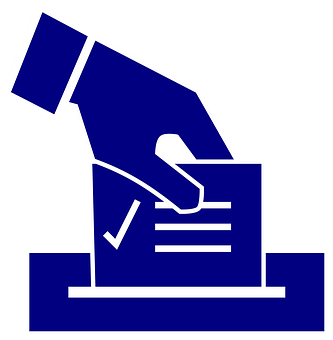Accurate voting is vital to the American system of government, and an area of bipartisan concern. Yet, according to some critics, a potential threat to the security of balloting has been voluntarily adopted, and there are now calls for a reversal of that process.
The replacement of simple lever machines and even more basic paper ballots has swept across the nation, particularly since 2010. A Stanford study examined the merits of electronic voting: “One of the significant benefits of this new system is the possibility for increased efficiency. With Electronic Voting Machines voters can submit their votes, and be reasonably confident that their vote will count (namely avoiding the “hanging chad” problem that handicapped the 2000 presidential elections in the United States). New Electronic Voting Machines can also stop voters from common election faults, such as picking too many or no candidates, also thereby increasing the general effectiveness of voting… technology adds more steps to the process and thus increases the possibility of error with each additional step, all of which are largely unseen by the voter.
“Not only does the technology create more errors in the electronic workings, but the voters can also commit mistakes due to confusion with the user interface. The terminology is confusing, different machines produce different interfaces, and even the audio guides to help the disabled may prove more confusing than helpful.
“With the advent of electronic machine voting also comes the higher possibilities of fraudulent machines and practices. First of all, the technology is ‘black box software,’ meaning that the public is not allowed access into the software that controls the voting machines. Although companies protect their software to protect against fraud (and to beat back competition), this also leaves the public with no idea of how the voting software works. It would be simple for the company to manipulate the software to produce fraudulent results. Also, the vendors who market the machines are in competition with each other, and there is no guarantee that they are producing the machines in the best interest of the voters and the accuracy of the ballots.
“Lastly, vote accuracy is also an issue, because voters have no way of confirming there vote, and there is also no way of conducting a recount with direct-recording electronic (DRE) voting. With DRE, there is no paper trail, no verification, and thus no scrutiny of the processes. Voter anonymity is also a problem. Voters have to provide much of their personal information to the systems for voter verification, and with that comes the problem of keeping voter information safe and keeping voters anonymous.”
The attraction of electronic devises has been explained by Jesse Emspsak, writing in Live Science: “With all the vulnerabilities of machines, why not simply use paper ballots, and hand-count them, as some smaller districts do, or even some major democracies…The answer comes down to U.S. election structure, [according to Warren Stewart, communications director at Verified Voting, a nonpartisan group that tracks voting technologies.] Americans vote on several candidates in each state, and in California and some other states, voters also weigh in on ballot measures…Of course, one could go to paper-based systems and hand-counting, but it would take a lot longer to count the votes. That might not be a bad thing, Stewart said.
But significant unease about the potential for tampering, either by partisan interests within the nation or by hostile nations abroad, exists.
Bruce Schneier a fellow at Harvard Kennedy School who serves on the advisory board of Verified Voting, recently noted in a Guardian editorial: “Today, we conduct our elections on computers. Our registration lists are in computer databases. We vote on computerized voting machines. And our tabulation and reporting is done on computers. We do this for a lot of good reasons, but a side effect is that elections now have all the insecurities inherent in computers. The only way to reliably protect elections from both malice and accident is to use something that is not hackable or unreliable at scale; the best way to do that is to back up as much of the system as possible with paper. Last year, the Defcon hackers’ conference sponsored a Voting Village. Organizers collected 25 pieces of voting equipment, including voting machines and electronic poll books. By the end of the weekend, conference attendees had found ways to compromise every piece of test equipment: to load malicious software, compromise vote tallies and audit logs, or cause equipment to fail. It’s important to understand that these were not well-funded nation-state attackers. These were not even academics who had been studying the problem for weeks. These were bored hackers, with no experience with voting machines, playing around between parties one weekend.”
The Report Concludes Tomorrow.
Illustration by Pixabay
